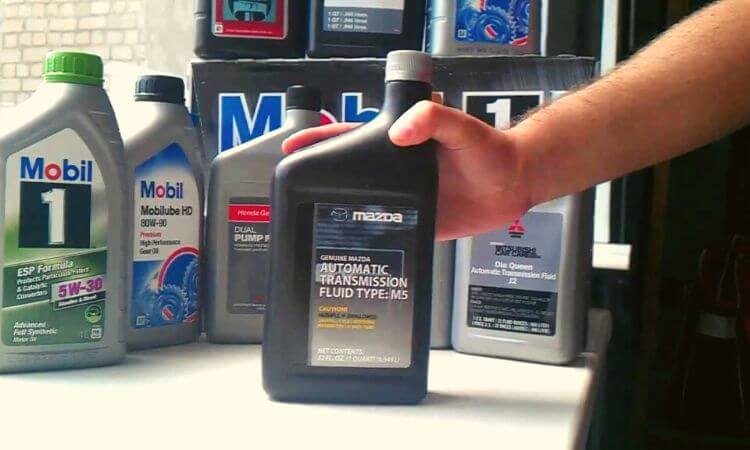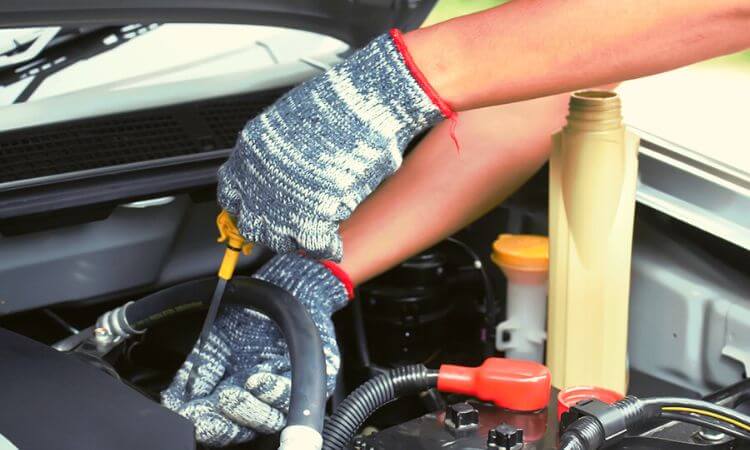Hey there! This post contains affiliate links to products. We may receive a commission for purchases made through these links. But it never influences our product selection process.
Chrysler 300 transmission fluid change plays a key role in preventing the engine from overheating. Also, changing the transmission fluid is responsible for directly increasing the performance of this type of large car. However, do you have any experience changing Chrysler 300 transmission fluid? If not, don’t worry! Let’s know how to do it.
- Lift your vehicle on the jack, and place the pan to collect the drained fluid.
- Remove the drain bolt and drain the old fluid properly.
- Reinstall the drain bolt after changing the filter, if necessary.
- Fill the required level with the recommended transmission fluid.
- Take a test drive and ensure the transmission system is okay.
Stay with me and learn how I deal with Chrysler 300 transmission fluid changes. You will be taught about everything. Let’s get started
Chrysler 300 Transmission Fluid Type

Here are two major types of transmission fluid recommended for the Chrysler 300. You must ensure you are using the correct type of transmission fluid, as recommended.
ATF+4 Transmission Fluid:
ATF+4 transmission fluid is the recommended type for Chrysler 300 models produced between 2005 and 2018. It is a specialized fluid that meets the specific requirements of Chrysler vehicles. ATF+4 provides excellent lubrication and heat resistance, ensuring smooth operation and protection for the transmission components.
Mopar ZF 8&9 Speed ATF Transmission Fluid:
For Chrysler 300 models manufactured from 2019 to 2023, the recommended transmission fluid is the Mopar ZF 8&9 Speed ATF. It is specifically formulated for the advanced ZF 8-speed and 9-speed transmissions. It provides the necessary lubrication and protection for the transmission components, ensuring smooth shifting and overall transmission performance.
Chrysler 300 Transmission Fluid Change:
| Model Year | Engine | Transmission | Fluid Type | Fluid Change Capacity (quarts) | Dry Fill Capacity (quarts) |
| 2005-2010 | V6 | 42RLE | ATF+4 | 4 | 8.9 |
| 2011-2014 | V6 | NAG1 | ATF+4 | 5.5 | 8.6 |
| 2015-2018 | V6 | 845RE | ATF+4 | 5.5 | 9.5 |
| 2019-2023 | V6 | ZF 8-speed | Mopar ZF 8&9 Speed ATF | 5.5 | 9.5 |
If you have noticed any signs of transmission issues or reached the recommended mileage, it’s crucial to schedule a Honda Civic vehicle transmission fluid change to maintain smooth and reliable driving.
Chrysler 300 Transmission Fluid Check

Follow the steps below to check the Chrysler 300 transmission fluid.
Step 1: Open the Hood
Open the car’s hood to begin checking the transmission fluid in your Chrysler 300. The fluid reservoirs are located under various caps under the hood.
Step 2: Locate the Fluid Reservoirs
Under the hood, you will find several fluid reservoirs. You will see washer fluid, coolant, brake fluid, and power steering reservoirs here. You will also find an oil fill cap and engine oil dipstick.
Each of these components plays a major role in the vehicle’s performance. You should regularly check them to maintain the best performance.
Step 3: Inspect the Brake Fluid Level
Now, get access to the brake fluid reservoir. It is usually mounted near the driver’s side of the engine bay. Remove the reservoir’s cap and check the fluid level by shining a flashlight on the top. The fluid should be filled up to the maximum level.
If the fluid appears dark or contains debris, it may need to be flushed and replaced. You can use any of the recommended brake fluids. However, I recommend Quicksilver DOT Brake Fluid for your Chrysler 300 for excellent results.
Step 4: Check the Coolant Level
Locate the coolant reservoir, which is also the fill location for coolant on the Chrysler 300. Check the coolant level using a flashlight and ensure it should be up to the recommended level. If required, refill the coolant to the recommended level.
Step 5: Inspect the Power Steering Fluid
Locate the power steering reservoir cap and remove it counterclockwise. The fluid in the reservoir should be red and free from particles or debris. Wipe off the dipstick, reinstall it, and check the fluid level. Ensure it is at the recommended level.
Step 6: Check the Engine Oil Level
Locate the engine oil dipstick, and remove it. Once removed, wipe it clean with a rag or paper towel. Reinsert the dipstick fully, remove it again, and observe the oil level. It should fall between the minimum and maximum marks on the dipstick. If the level is low, add oil gradually until it reaches the proper level.
Step 7: Refill Washer Fluid
Open the washer fluid reservoir cap and fill it with your preferred washer fluid until it reaches its maximum capacity.
Step 8: Secure all Caps and Close the Hood
Ensure all the fluid reservoir caps are securely tightened, and then close the hood of your Chrysler 300.
If you have time, I recommend reading the linked article for more clarity and information about the importance and process of GMC Sierra transmission fluid change to make informed maintenance decisions.
How Often Do You Change Transmission Fluid Chrysler 300?
For a Chrysler 300 with a manual transmission, it is recommended to change the fluid every 30,000 – 60,000 miles. The transmission has a total capacity of approximately 8.3 – 9.2 liters, but when changing the transmission filter and pan, only about 5.5 liters will drain.
Chrysler 300 Transmission Fluid Change Guide

When dealing with a Chrysler 300 transmission fluid change, follow the instructions below to ensure you have done it correctly.
Lift the Vehicle:
Start with lifting your Chrysler 300. Use a jack to raise your Chrysler 300, ensuring the jack is placed on a solid part of the frame. You can set the jack in the middle of the vehicle because it is harder. For better support and safety of the vehicle, use jack stands.
Place a Drain Pan:
Now, position a drain pan under the transmission line to catch the fluid during draining.
Locate the Drain Bolt:
Identify the drain bolt on the bottom of the transmission. It is usually a hex head bolt. Insert a hex head tool into the bolt and loosen it. Once loose, you can remove it by hand. Allow the transmission fluid to completely drain into the pan.
Remove the Fluid:
Allow the fluid to drain completely from the transmission. It may take 15 to 20 minutes to drain correctly. Observe the color of the fluid, as it should be red. If the fluid appears dark or black, it is bad and needs replacement. I recommend Valvoline Hybrid Vehicle Full Synthetic ATF for Chrysler 300.
Replace the Filter:
Some Chrysler 300 models have a transmission filter. If your model has one, you will need to replace the filter. First, remove the bolts securing the pan and then carefully remove them to avoid creating a mess. Replace the old filter with a new one before reassembling it.
Reinstall the Drain Bolt:
Once the transmission fluid has stopped draining, tighten the drain bolt securely using a socket or wrench.
Determine Fluid Quantity:
Pour the drained fluid into quart bottles to determine how much fluid to add. Keep pouring until you know the exact amount that came out.
Check Fluid Level:
After filling the transmission with the recommended amount of fluid, start the engine and let it idle for a few minutes. After that, check the fluid level with a dipstick. Make sure it is up to the recommended level. If it is low, add some more fluid to reach the correct level.
Test Drive:
Take your Chrysler 300 for a drive to ensure proper transmission operation. The cleaner may take time; usually between 100 and 250 miles, to fully optimize performance.
Do you have a KIA Optima? Read this for transmission fluid change: Kia optima transmission fluid change.
Chrysler 300 Transmission Fluid Change Cost
The cost of a Chrysler 300 transmission fluid change typically ranges between $150 and $167. Labor costs can be between $64 and $81. The price for different parts replacement may be around $86. However, the cost may vary depending on your location and Ford vehicle model.
To learn about the Jeep Cherokee transmission fluid change visit here: 2015 jeep cherokee transmission fluid change.
Frequently Asked Questions (FAQs):
How much transmission fluid does a Chrysler 300 need?
Can I change the transmission fluid in my Chrysler 300 myself?
However, keep in mind that the process can be messy and may involve lying under the car and getting drenched in fluid.
Before starting the job, make sure you have proper instructions about the process and are confident in your skills.
What tools are required to change the transmission fluid in a Chrysler 300?
01. Drain the pan
02. Socket set
03. Ratchet
04. Torque wrench
05. Funnel
06. Fluid pump
07. Transmission filter (Optional)
08. Gasket or sealant (Optional)
09. Shop towels or rags
10. Safety glasses
11. Gloves
Synthetic or non-synthetic, which is the best transmission fluid for my Chrysler 300?
Conclusion
Transmission fluid helps the vehicle to maintain its performance at a good level. Over time, you need to change the transmission fluid to ensure you have the correct environment for your vehicle to ensure maximum performance.
In Chrysler 300, you need to change transmission fluid after 30000 to 60000 miles. However, when changing, ensure you follow the proper process and use high-quality synthetic fluid transmission.

